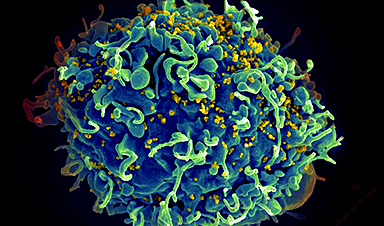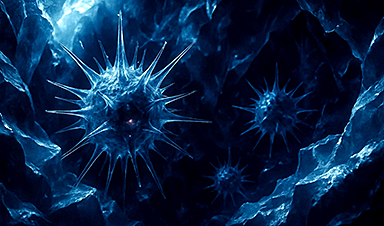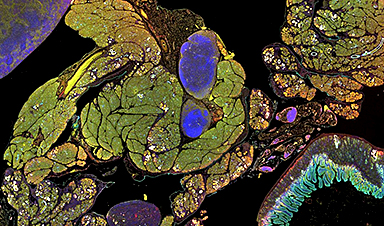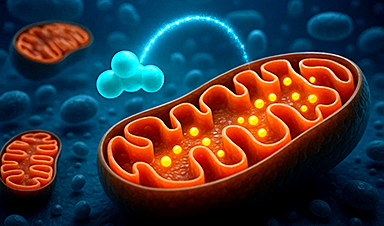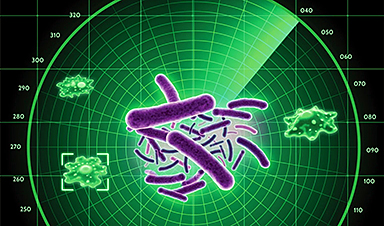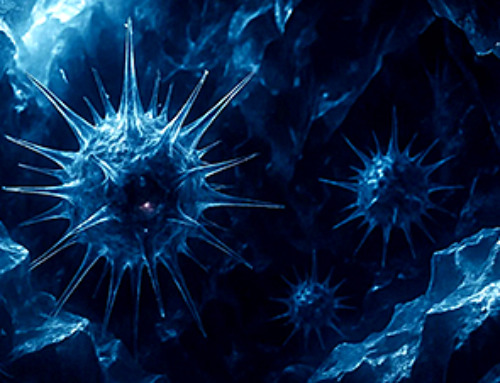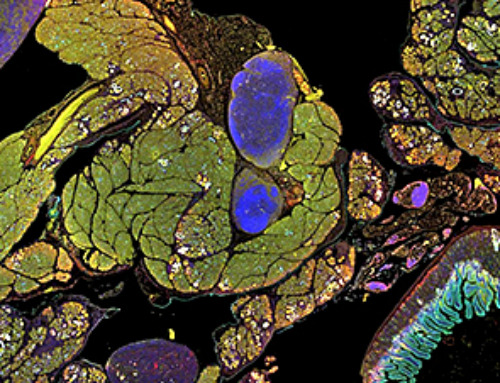A multinational team led by Weill Cornell Medicine investigators developed a test that will help measure the persistence of HIV in people affected by viral strains found predominantly in Africa—a vital tool in the search for an HIV cure that will benefit patients around the world.
The study, published in Nature Communications on July 2, helps fill a major gap in human immunodeficiency virus (HIV) research. Most HIV studies have focused on strains circulating in Western countries, predominantly in men who have sex with men affected by subtype B. Few studies have examined strains circulating in Africa, where women are disproportionately affected.
“HIV cure research tends to focus on viral strains circulating in developed countries, but to achieve a cure that is globally applicable, we must study viral strains that are affecting other regions of the world,” said lead author Dr. Guinevere Lee, assistant professor of virology in medicine in the Division of Infectious Diseases and assistant professor of microbiology and immunology at Weill Cornell Medicine.
The findings show—like other studies in developed countries—that HIV strains circulating in Africa establish viral reservoirs in the human body. Although antiretroviral therapy can reduce the level of HIV in the blood to an undetectable level, these dormant reservoirs continue to survive.
They contain a large number of defective proviral DNA genomes which can’t produce new infectious viruses, but a small number of genomes remain genetically intact and ready to produce active viruses if antiretroviral treatment is interrupted.
The large proportion of defective viral genomes obscures researchers’ attempts to accurately quantify the copies of intact proviruses.
“We are looking for a needle in a haystack: To achieve an HIV cure, we need to first find out whether any genome-intact proviruses remain in the body during antiretroviral treatment. Our new assay allows us to do this. Then we need to target and eliminate the intact proviral DNA capable of producing new viruses,” Dr. Lee explained.
Broadening the lens of HIV research with a new assay
Dr. Lee and her colleagues analyzed DNA from immune cells called CD4+ T cells, where viral DNA hides, of 16 women and seven men receiving antiretroviral HIV treatment in Uganda. Genetic sequencing of the virus revealed two predominant HIV-1 subtypes: A1 and D (a notoriously aggressive strain). The study also identified viral hybrids of A1 and D.
The team then modified existing laboratory tests that identify HIV subtype B proviruses to detect proviruses that are subtypes A1 and D. “The new assay we’ve developed will help researchers home in on the intact proviral genomes relevant to HIV cure research for patients affected by these under studied strains,” Dr. Lee said.
Dr. Lee and her multinational, multi-institution collaborators are already using the new assay to study long-term viral persistence in Uganda. Their findings show that the composition of the HIV proviral genomic landscape is broadly comparable between subtypes A1, D and B suggesting that approaches to target intact HIV reservoirs in Africa will face similar “needle-in-a-haystack” challenges as in North America and Europe.
Future studies will also need to evaluate differences in non-B subtypes to understand whether subtype-specific factors impact persistence, reactivation or clearance in viral reservoirs.
Researchers from Simon Fraser University, Canada; British Columbia Center for Excellence in HIV/AIDS, Canada; Rakai Health Sciences Program, Uganda; University of Cape Town, South Africa; and Johns Hopkins University School of Medicine also contributed to this study.
More information: Lee, G.Q., et al. HIV-1 subtype A1, D, and recombinant proviral genome landscapes during long-term suppressive therapy. Nature Communications (2024). DOI: 10.1038/s41467-024-48985-9
News
Studies detail high rates of long COVID among healthcare, dental workers
Researchers have estimated approximately 8% of Americas have ever experienced long COVID, or lasting symptoms, following an acute COVID-19 infection. Now two recent international studies suggest that the percentage is much higher among healthcare workers [...]
Melting Arctic Ice May Unleash Ancient Deadly Diseases, Scientists Warn
Melting Arctic ice increases human and animal interactions, raising the risk of infectious disease spread. Researchers urge early intervention and surveillance. Climate change is opening new pathways for the spread of infectious diseases such [...]
Scientists May Have Found a Secret Weapon To Stop Pancreatic Cancer Before It Starts
Researchers at Cold Spring Harbor Laboratory have found that blocking the FGFR2 and EGFR genes can stop early-stage pancreatic cancer from progressing, offering a promising path toward prevention. Pancreatic cancer is expected to become [...]
Breakthrough Drug Restores Vision: Researchers Successfully Reverse Retinal Damage
Blocking the PROX1 protein allowed KAIST researchers to regenerate damaged retinas and restore vision in mice. Vision is one of the most important human senses, yet more than 300 million people around the world are at [...]
Differentiating cancerous and healthy cells through motion analysis
Researchers from Tokyo Metropolitan University have found that the motion of unlabeled cells can be used to tell whether they are cancerous or healthy. They observed malignant fibrosarcoma [...]
This Tiny Cellular Gate Could Be the Key to Curing Cancer – And Regrowing Hair
After more than five decades of mystery, scientists have finally unveiled the detailed structure and function of a long-theorized molecular machine in our mitochondria — the mitochondrial pyruvate carrier. This microscopic gatekeeper controls how [...]
Unlocking Vision’s Secrets: Researchers Reveal 3D Structure of Key Eye Protein
Researchers have uncovered the 3D structure of RBP3, a key protein in vision, revealing how it transports retinoids and fatty acids and how its dysfunction may lead to retinal diseases. Proteins play a critical [...]
5 Key Facts About Nanoplastics and How They Affect the Human Body
Nanoplastics are typically defined as plastic particles smaller than 1000 nanometers. These particles are increasingly being detected in human tissues: they can bypass biological barriers, accumulate in organs, and may influence health in ways [...]
Measles Is Back: Doctors Warn of Dangerous Surge Across the U.S.
Parents are encouraged to contact their pediatrician if their child has been exposed to measles or is showing symptoms. Pediatric infectious disease experts are emphasizing the critical importance of measles vaccination, as the highly [...]
AI at the Speed of Light: How Silicon Photonics Are Reinventing Hardware
A cutting-edge AI acceleration platform powered by light rather than electricity could revolutionize how AI is trained and deployed. Using photonic integrated circuits made from advanced III-V semiconductors, researchers have developed a system that vastly [...]
A Grain of Brain, 523 Million Synapses, Most Complicated Neuroscience Experiment Ever Attempted
A team of over 150 scientists has achieved what once seemed impossible: a complete wiring and activity map of a tiny section of a mammalian brain. This feat, part of the MICrONS Project, rivals [...]
The Secret “Radar” Bacteria Use To Outsmart Their Enemies
A chemical radar allows bacteria to sense and eliminate predators. Investigating how microorganisms communicate deepens our understanding of the complex ecological interactions that shape our environment is an area of key focus for the [...]
Psychologists explore ethical issues associated with human-AI relationships
It's becoming increasingly commonplace for people to develop intimate, long-term relationships with artificial intelligence (AI) technologies. At their extreme, people have "married" their AI companions in non-legally binding ceremonies, and at least two people [...]
When You Lose Weight, Where Does It Actually Go?
Most health professionals lack a clear understanding of how body fat is lost, often subscribing to misconceptions like fat converting to energy or muscle. The truth is, fat is actually broken down into carbon [...]
How Everyday Plastics Quietly Turn Into DNA-Damaging Nanoparticles
The same unique structure that makes plastic so versatile also makes it susceptible to breaking down into harmful micro- and nanoscale particles. The world is saturated with trillions of microscopic and nanoscopic plastic particles, some smaller [...]
AI Outperforms Physicians in Real-World Urgent Care Decisions, Study Finds
The study, conducted at the virtual urgent care clinic Cedars-Sinai Connect in LA, compared recommendations given in about 500 visits of adult patients with relatively common symptoms – respiratory, urinary, eye, vaginal and dental. [...]
